Moths pick up the night shift
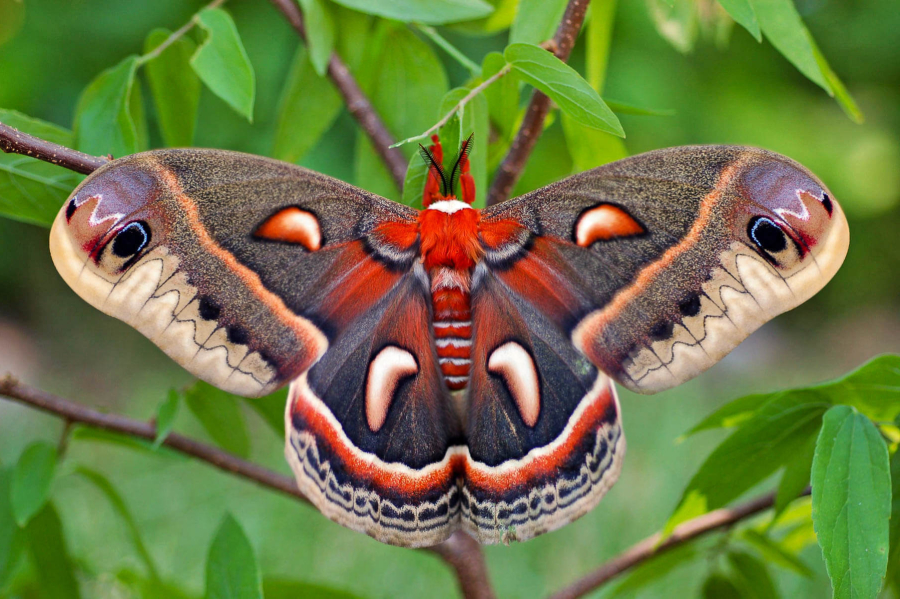
Human focus on nature tends to be what we can see and when we can see it during the day. We rightfully champion the busy worker bees, smell the roses and delight in birdsong, yet nature always has new surprises in store. In recent years we’ve begun to discover what happens behind the scenes. Flowers fluoresce in brilliant hues beyond the capability of human eyes. Some plants increase the sugar content of their nectar when they detect the vibration of a bee’s wings. And contrary to our assumption that bees and butterflies are the primary players, a lot of pollination happens while we sleep—thanks to moths.
Moths as powerhouse pollinators
Moths are an evolutionary group that dates back way before the dawn of the bees and butterflies. Because we are more likely to see them during the day, humans are more familiar with butterflies than with moths. However, moths outnumber butterfly species nine to one in discovered Lepidoptera (the insect order that contains moths and butterflies). There are more than 11,000 species of moths in the U.S. alone, and they are a wealth of fascinating facts. In comparison to moths, researcher Jesse Barber of Boise University referred to butterflies as, “an uninteresting diurnal [daytime] group of moths.”
A recent study in England found moths are outshining other pollinators, fertilizing more types of plants and flowers that bees overlook. Many bees and butterflies preferentially target flowers rich in nectar. Moths, on the other hand, are generalists, frequenting a wider range of species and visiting those that bees skip. These night shift moths, it turns out, are crucial to pollination.
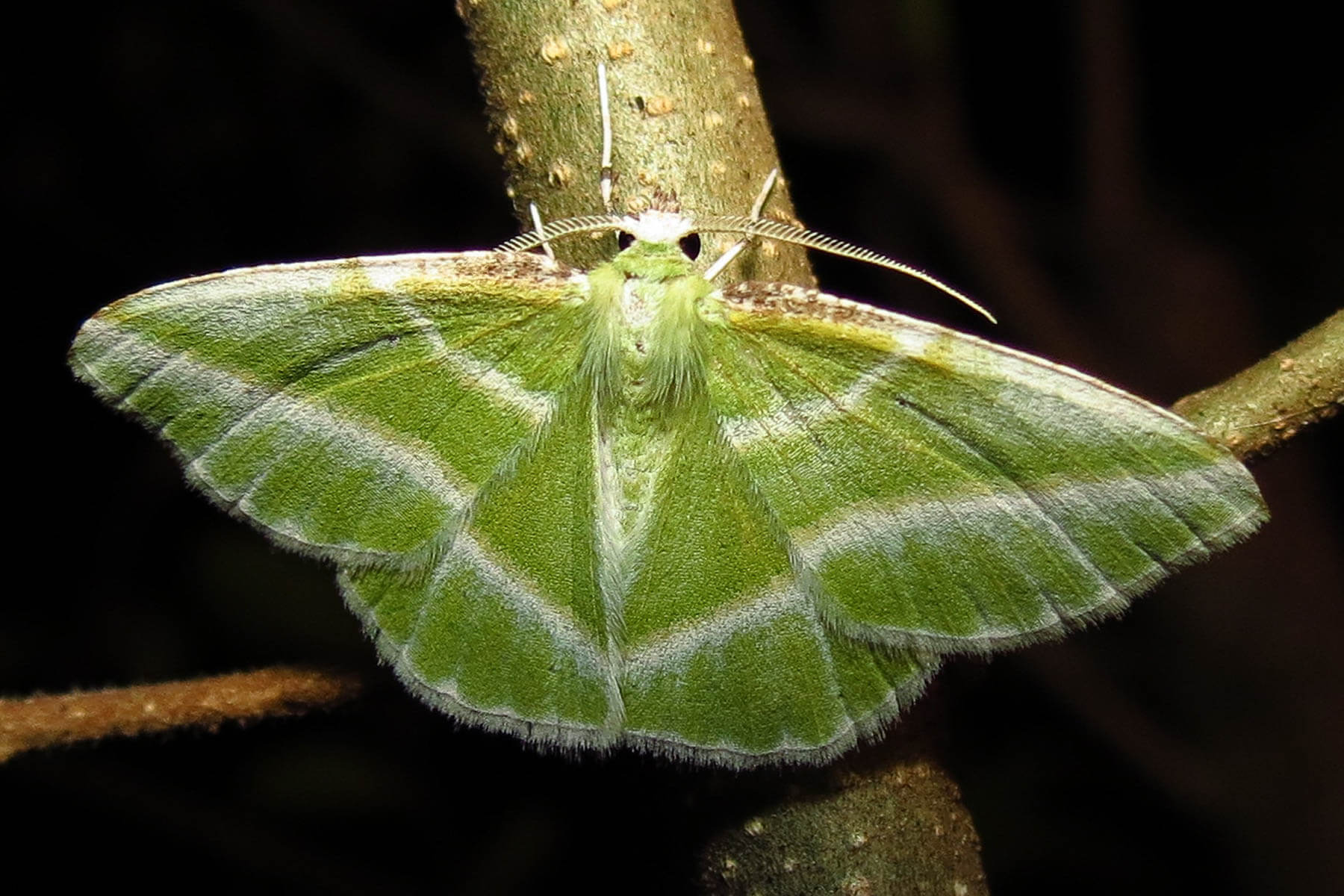
Their pollination power is due in part to the tiny scales that give moths their fur-like covering. As the moths visit a diverse array of flowers and enjoy the nectar, their fuzzy bodies collect pollen like a feather duster.
While critical to the moths' role in pollination, their fluff actually evolved to confuse the sonar of night-feeding bats. In fact, the evolutionary arms race with bats has been playing out for a long time. Moths can hear, which researchers used to believe developed to help them escape bats and their sonar technology. However, it may be the other way around. Moths and their ears are older, evolutionarily speaking, so it may be that bats evolved their sonar to better capture moths that already have a leg up on detecting a predator’s approach.
Fascinating moth features
The proboscis (the tongue)
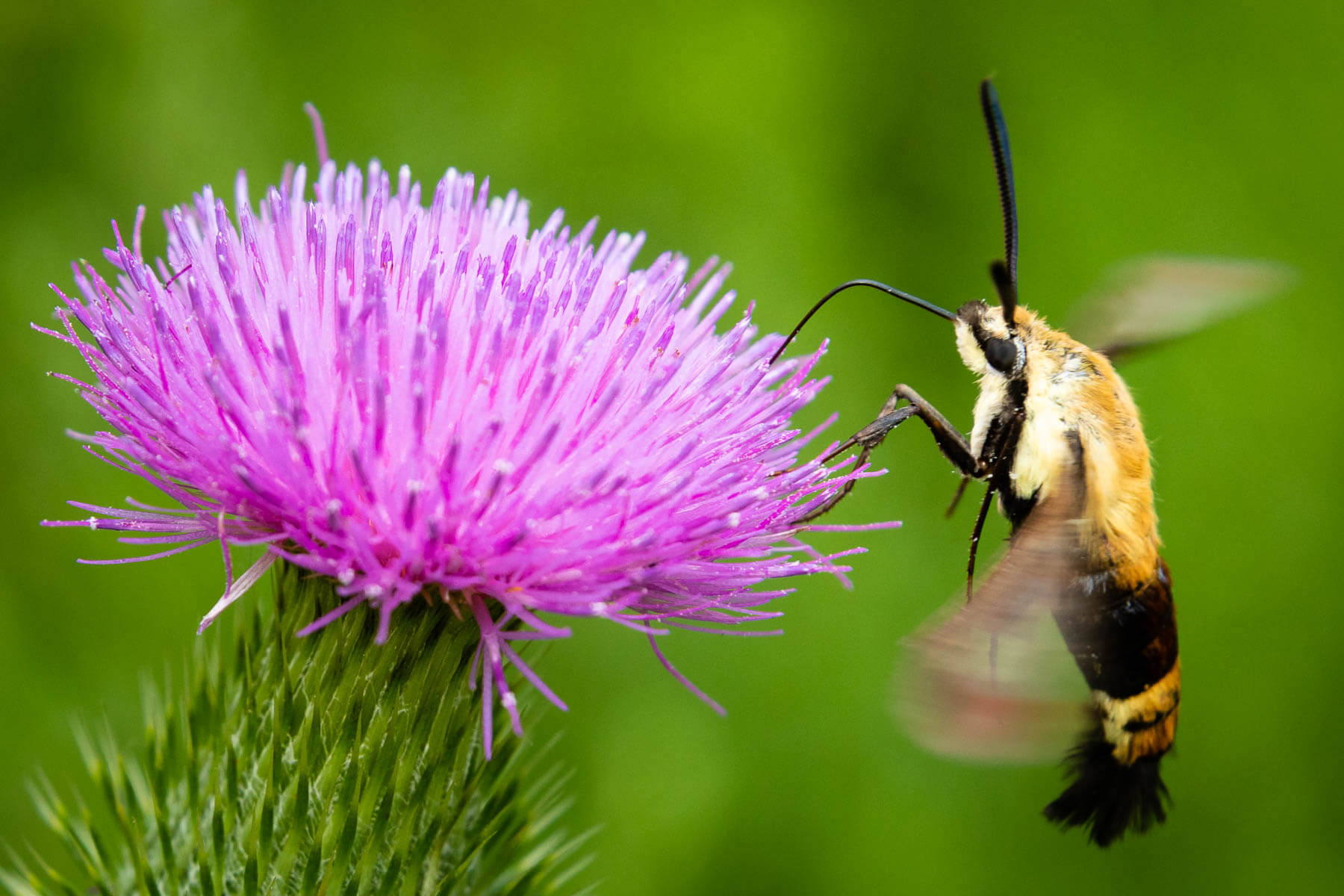
Moths have an elongated appendage known as a proboscis that can adapt to extract nectar from many types of flowers.
These incredible tongues were even written about by Charles Darwin, who marveled at their design and suggested the moths with these proboscises might be the whole reason certain orchids existed. While he was scoffed at for this theory, researchers recently captured footage of a sphinx moth pollinating the beautiful and ethereal ghost orchid using its 30cm proboscis.
Moths are so adept with these tongues that they can even drink the tears of sleeping birds without waking them.
The antennae
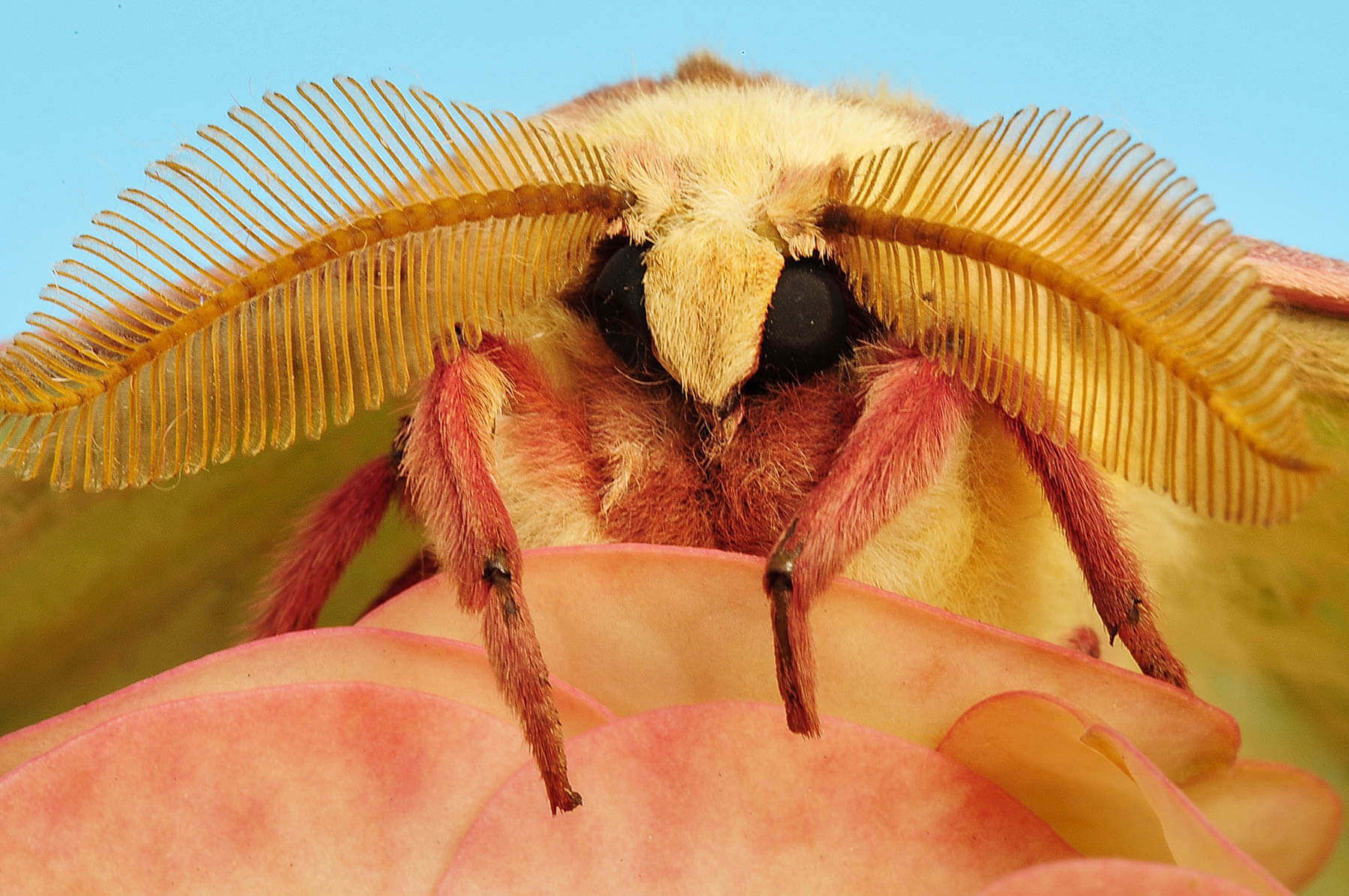
As fabulous as they may appear, the feather-looking antennae of some moths are far from decorative. The detailed structure actually helps the male detect female pheromones from up to several miles away, depending on the species. According to Dr Qike Wang in a recent study, the scales that form the antennae are angled to serve the dual purpose of enhancing female scent and diverting contaminants like dust. The special design creates an area of slow airflow around the antennae, helping the scent to linger and increasing the effectiveness of the pheromones around the sensilla (the sensory receptors).
For the lady moth’s part, she is smelling more than the male’s presence. A female moth has the ability to detect reproductive fitness in the male moth’s pheromones. Believe it or not, humans may also have this ability.
Moth travel
“Like a moth to a flame” may be a common phrase, but moths aren’t actually attracted to light itself. When we put lights on our porches and seem to entice moths to it, we’re interfering with the way they orient their world. Moths navigate by the light of the moon, so they keep it at a certain angle to their body. All of the artificial lights we have now are like millions of road signs sending moths in the wrong direction.
When they emerge from their cocoons, moths still look like pudgy piglets with fluff and tiny wings. A newly emerged moth will pump fluid, called hemolymph, into its wings to unfurl them to their full adult span. Using their antennae to help balance, strong muscles in their thorax then move the wings up and down and propel them off in search of mates and flowers.
Moths of the Chesapeake
From the mountains of West Virginia to the lakes of New York and the hills of southern Virginia, the Chesapeake watershed boasts a number of impressive moth species.
The most captivating of our region’s moths, at least color-wise, may be the rosy maple moth, Dryocampa rubicunda. This moth has large eyes and is delightfully fluffy, sporting a cotton-candy-lemonade coat of bubblegum pink and bright yellow. As the name suggests, rosy maples gravitate to maple trees.
Rosy maple moths are in the silk moth family, Saturniidae, which sports several stunning species that can reach close to the breadth of an adult human’s hand. Silk moths in the Chesapeake are numerous and include such members as the Polyphemus, whose caterpillar eats 86,000 times its body weight, and the woodland-dwelling Prometheus, whose light green caterpillar becomes a black to brown adult moth with a wingspan reaching close to four inches. As they live only to reproduce, silk moths do not feed like other moth species. However, they are a food source for other animals.
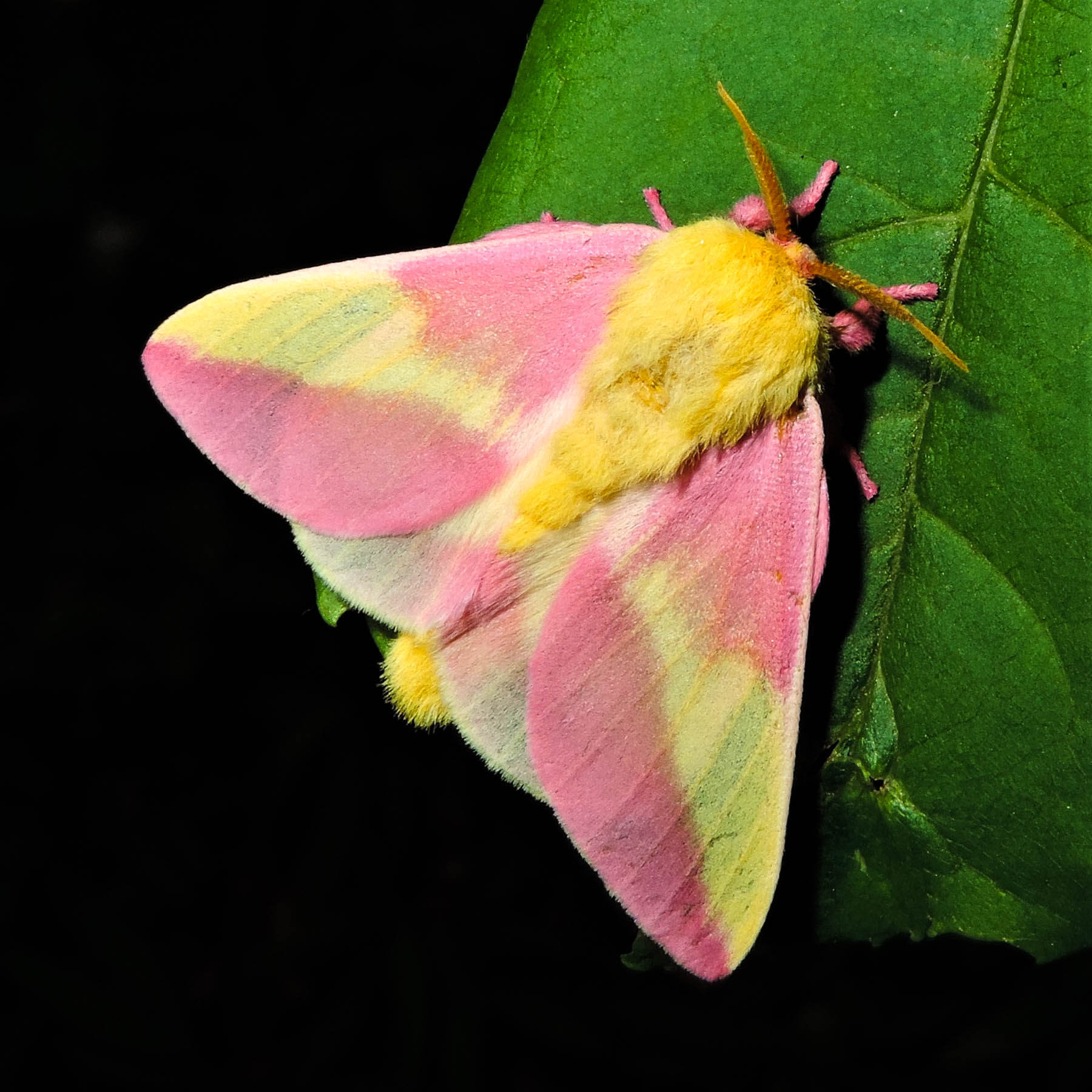
The largest of the silk moths is the Cecropia, which begins its life as a shockingly adorned and bulbous four-inch caterpillar in shades of black to light green with a bluish hue. Once emerging from its cocoon, the cecropia moth unfurls wings of stunning white, orange and grey that reach almost six inches across. The body is equally beautiful, with a fuzzy red face and feet and body bands of crisp black and white. As the sole purpose of the short-lived adult is to mate and reproduce, cecropia do not have a digestive tract and aren't pollinators.
Lunas are one of the most recognizable of the silk moths, eliciting admiring sighs from humans lucky enough to spot their fleeting beauty. Lunas do not have a functioning mouth, living only a few days in their adult form. Their pale green, ethereal wings rightfully distract from the body, though this too is strangely beautiful with its creamy coloring and red wine-hued legs. They have long tails on the ends of their wings, which spin as the moth flies. The fluttering of the tails confuses the sonar of bats and affords these night-flying lovelies some additional protection while finding their mates.
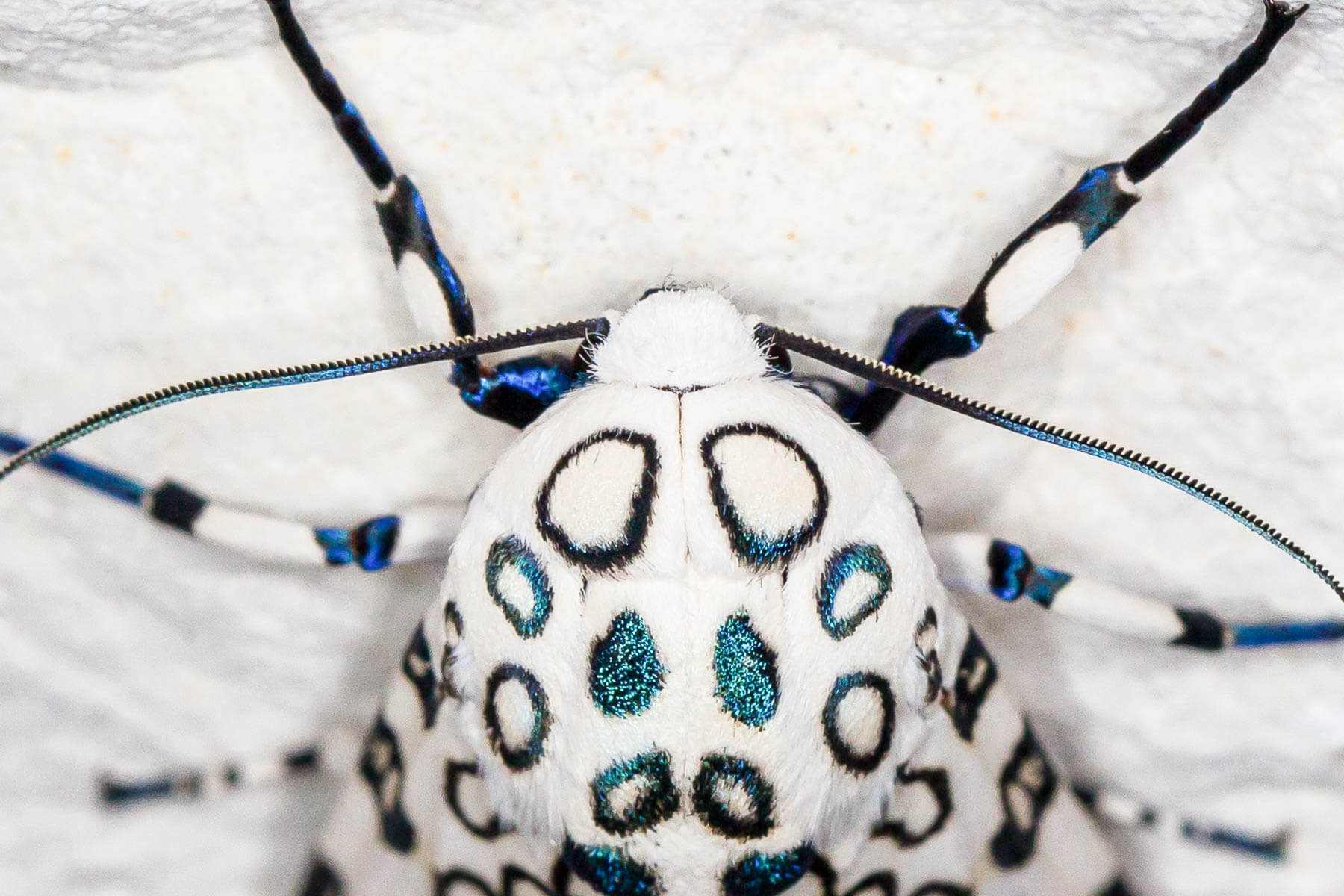
Not all moths are nocturnal, and some don’t even look like what we think of as moths. One unusual moth in our watershed is the hummingbird moth, a massive insect many people have seen and mistaken for a bird while watching them visit common garden flowers such as bluebells, bee balm, phlox and verbena. Hummingbird moths like the snowberry clearwing are active during the day, have chunky bodies and even make a humming sound like a hummingbird. If you are interested in seeing these fascinating cross-overs of the animal world, look no further than the leaf piles outside. The loose cocoons of hummingbird moths are often found in leaf litter.
Some moth caterpillars in our region look terrifyingly poisonous but aren’t, like the hickory horned devil. Others look incredibly huggable but should not be touched, like the puss caterpillar. In their turquoise coloring and formidable spurs, the harmless hickory horned devil is one of the few moth caterpillars that does not spin a cocoon. Instead, it burrows into the ground to later emerge as the large and aptly named regal moth. On the opposite end of the spectrum, the fluffy exterior of the adorable puss caterpillar conceals venomous spines that can land a full grown human in the hospital with a single touch. Both cute and innocuous, the adult flannel moth appears to be sporting fluffy boots and is completely harmless. This is a southern moth, so it is found in our watershed only in the far-flung reaches of Virginia. Their cocoons are tough, and abandoned ones serve as ready-made homes for a variety of other insects.
The list of fascinating local moths goes on. Beautiful wood nymphs mimic bird poop, Scarlet Wings live on lichen, Clymenes are also called “goth moths” and vocalize back to bats. The world of moths is diverse and fascinating, and all moths mentioned can be found in our watershed. Stay up late some night and explore what is out there in the world of darkness.

Comments
Cocoon of moth with another moth on the outside of the cocoon?
Judith, moths will gather around streets and porch lights. However, the light disorients them, so we don't recommend leaving on lights for the sake of finding moths.
If one goes out at night to find moths and caterpillars , what is the most efficient process ?
Great article and pictures! I have been lucky enough to have seen these moths.
Excellent educational article. Thank you.
Thanks for your work of relating some of the great research on natural processes being done in recent years, pushing us toward the hope that the science, while revealing fascinating wonders, leads us towards the humbling wisdom we desperately need.
Excellent article Caitlyn! Thanks
Thank you!
Your comment has been received. Before it can be published, the comment will be reviewed by our team to ensure it adheres with our rules of engagement.
Back to recent stories